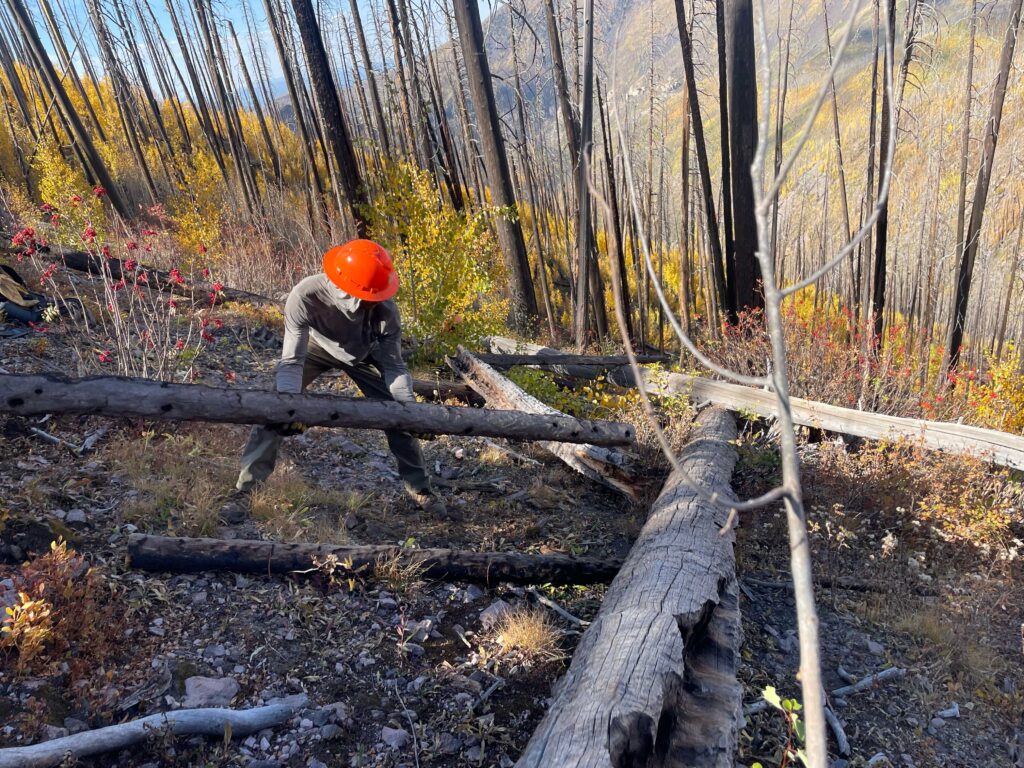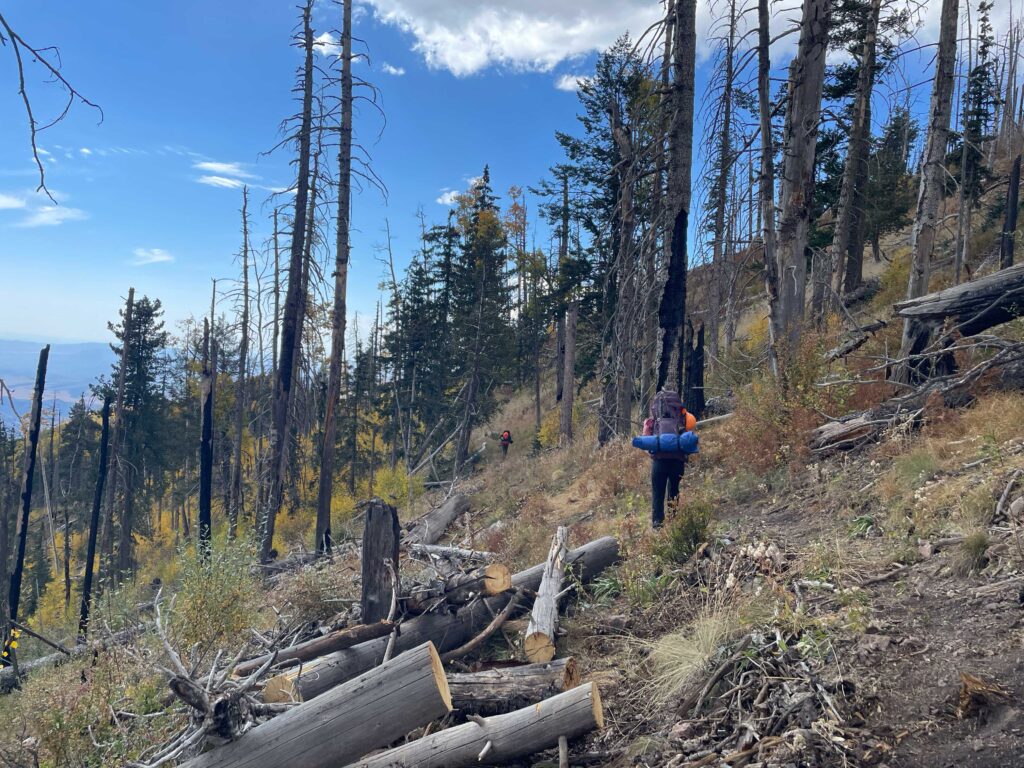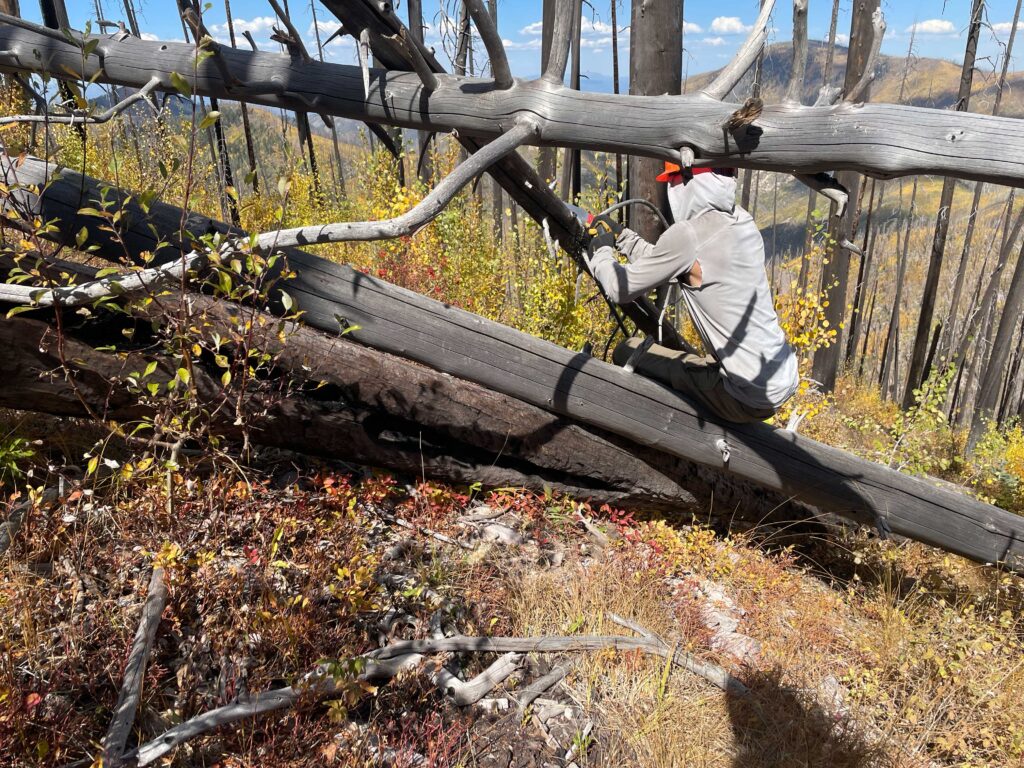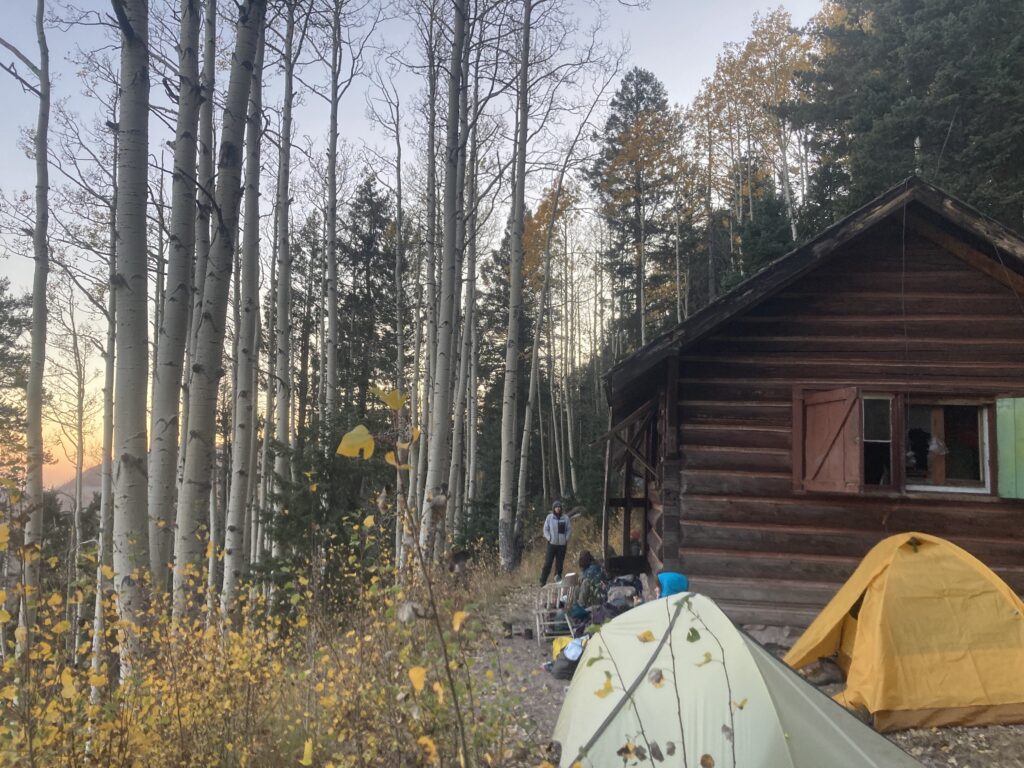
Written by Joseph Cofresi, Wild Stew Field Crew Member.
The past few weeks here at Wild Arizona, we have taken on a handful of new Wild Stew Field Crew members. With this increase in numbers we are able to return to two crews. While one crew worked only an hour drive from Tucson in the Santa Rita Mountains, the other crew made the four and half hour trek to return to the Gila Wilderness in western New Mexico. This is our story.
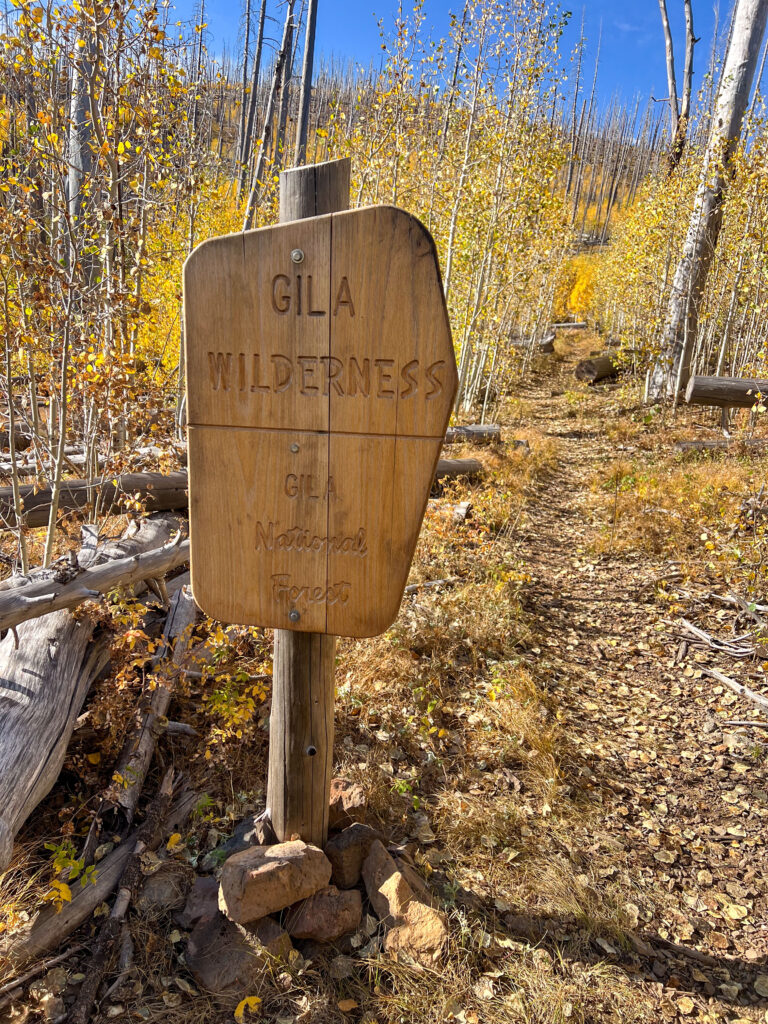
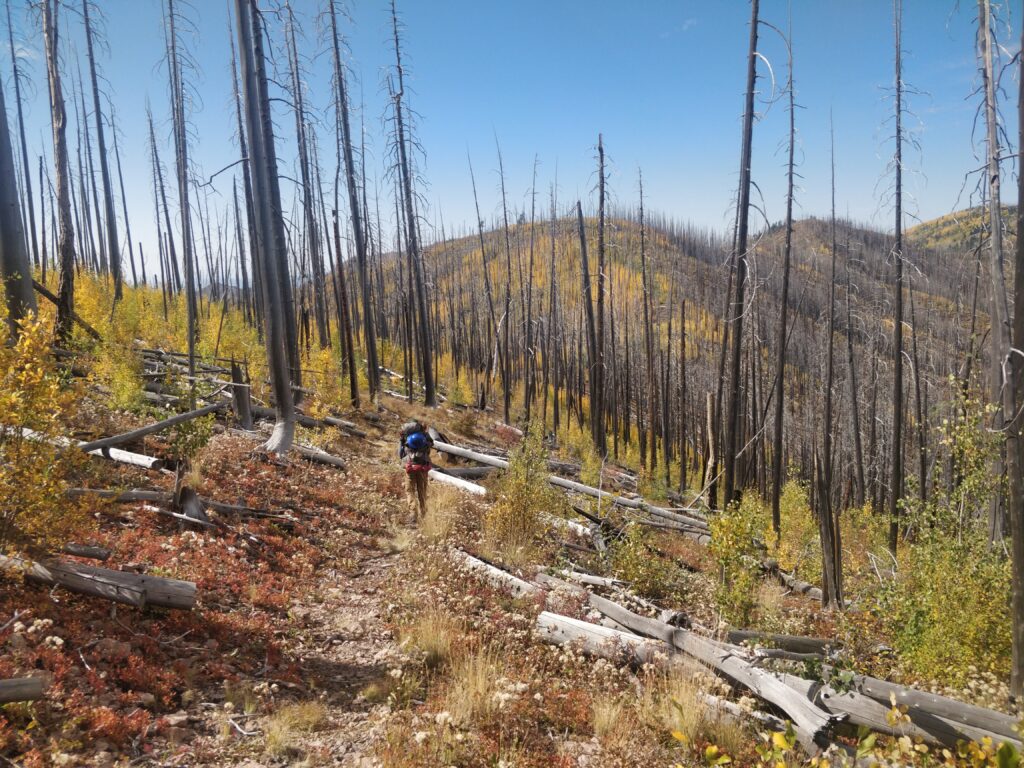
We began our first day in the heat of Tucson at our storage yard, welcoming both new members to the crew and returning members back from time off. Dexter, Iman, Clay, Max, Viola, and I chucked our eight-day-stuffed backpacks into the bed of our truck and inside our trailer and set off for Sandy Point Trailhead in the Gila Wilderness. Upon our arrival we geared up, strapped on our packs, and began the four-and-three-quarter mile hike up the Crest Trail to Hummingbird Saddle, our home for the first night. Tents were pitched, hammocks were hung, and dinner was consumed.
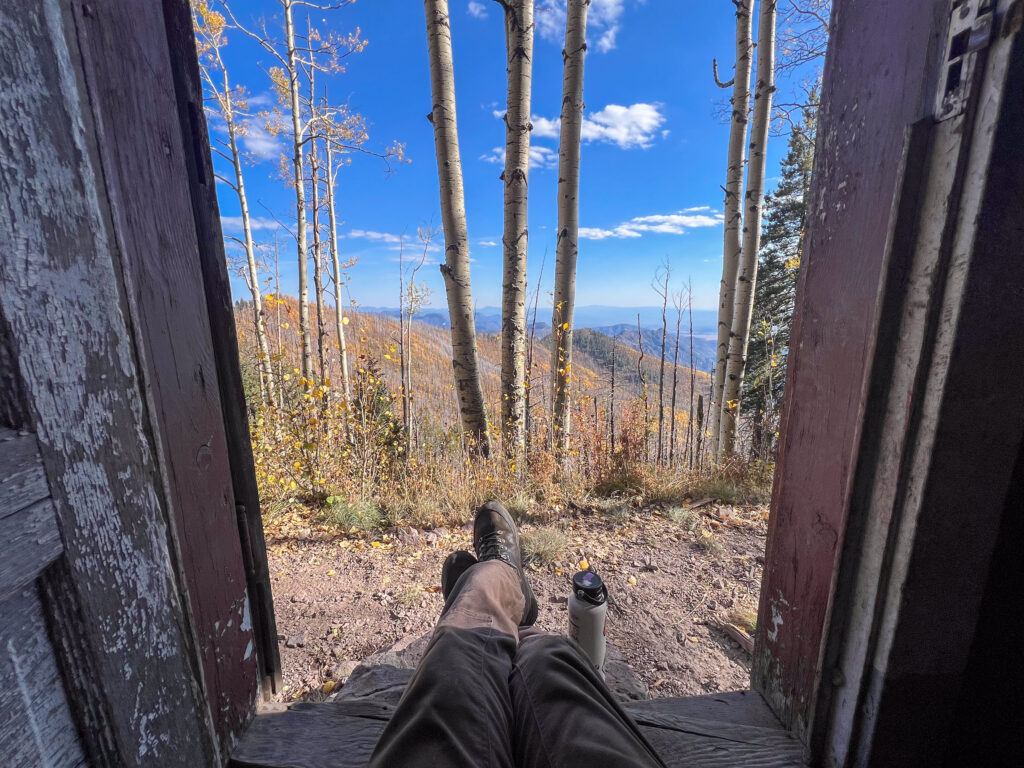
The next morning we shut shop down and hiked another four-and-a-half miles to the Apache Cabin (our home for the majority of this hitch) where our work would officially begin: opening up the Holt–Apache Trail. Along the way to the cabin we gathered our cached tools from our previous hitch and continued brushing and treading our way down the trail until we were greeted by an early afternoon thunderstorm. Rather than chance it, we chose to hightail it to the cabin before the storm came pouring down on us. Luckily it never did; but, there was a moment I was nervous we may have to start building quinzhees once some water (and a form of solid water) began to fall from the sky. Lucky for us it did not fall in copious amounts.
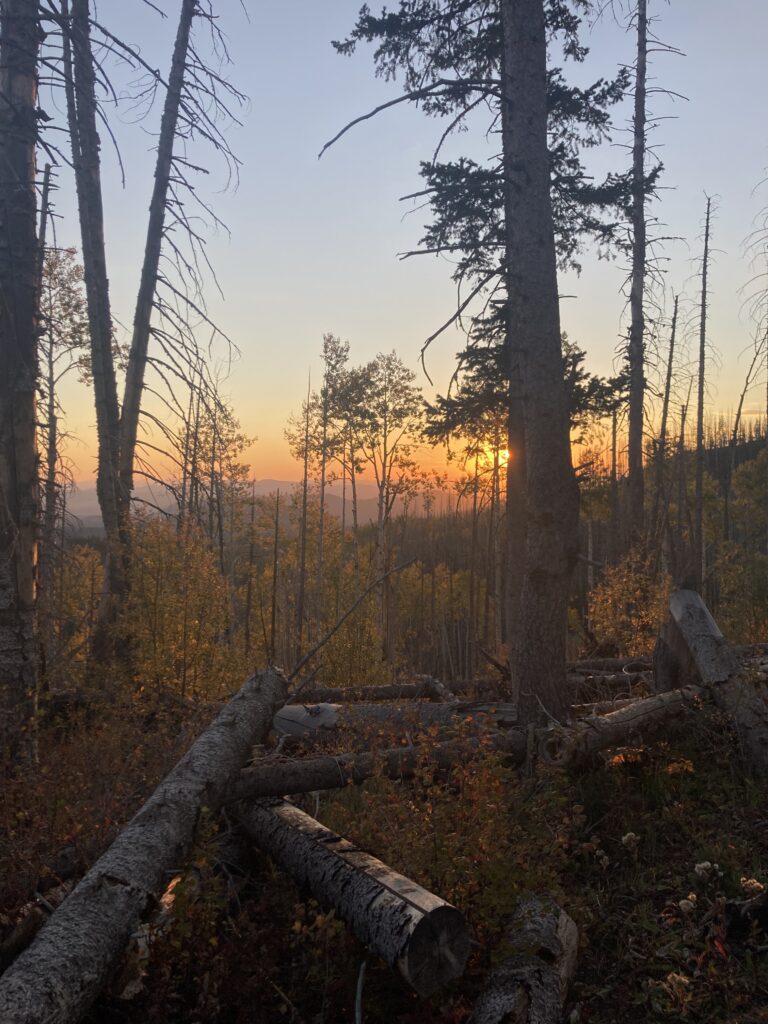
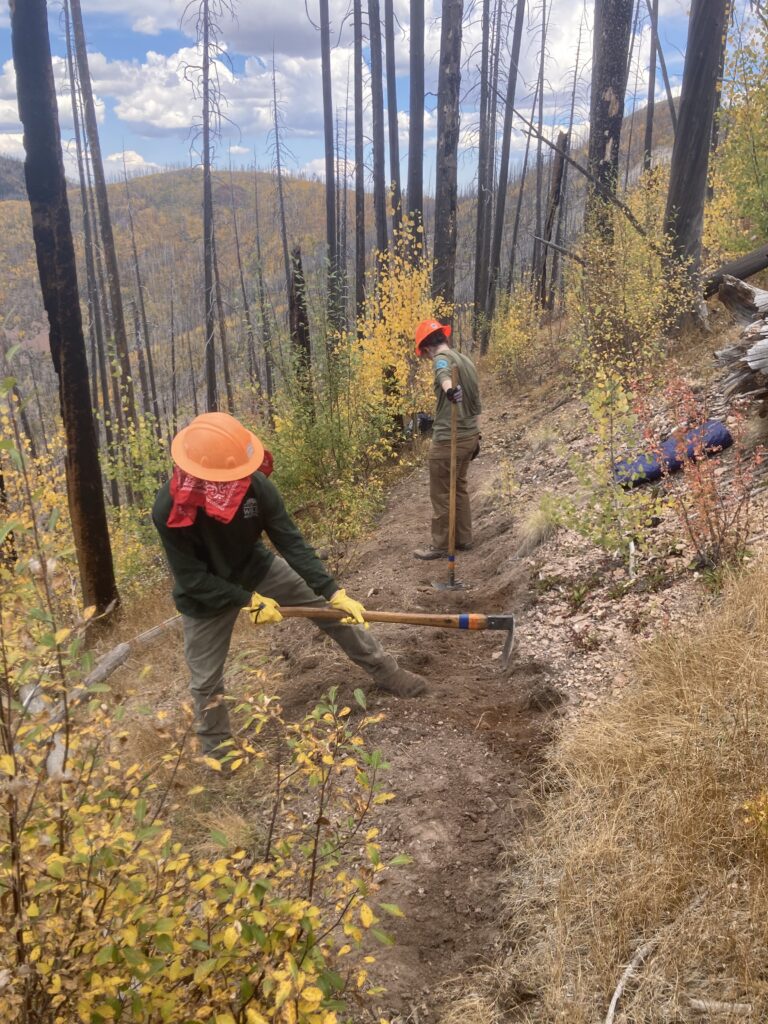
The cabin itself was a nice amenity, mainly so that if it got too cold or if we were hit with wet weather we would have a “nice” place to take shelter; however, being the dirtbags we are, we found it more comfortable to spend as little time in the cabin as needed. Not due to the fact that it is haunted by the spirit of ’Ol Toobus—our main concern was the occupancy of rodents and their droppings within the cabin. We did not have a pleasant experience with these invisible creatures of the night as they had raided some gear early in the hitch, and on our last night there they hijacked our water filtration hoses, leaving us to resort to using chemical treatment to purify our water for the last two days.
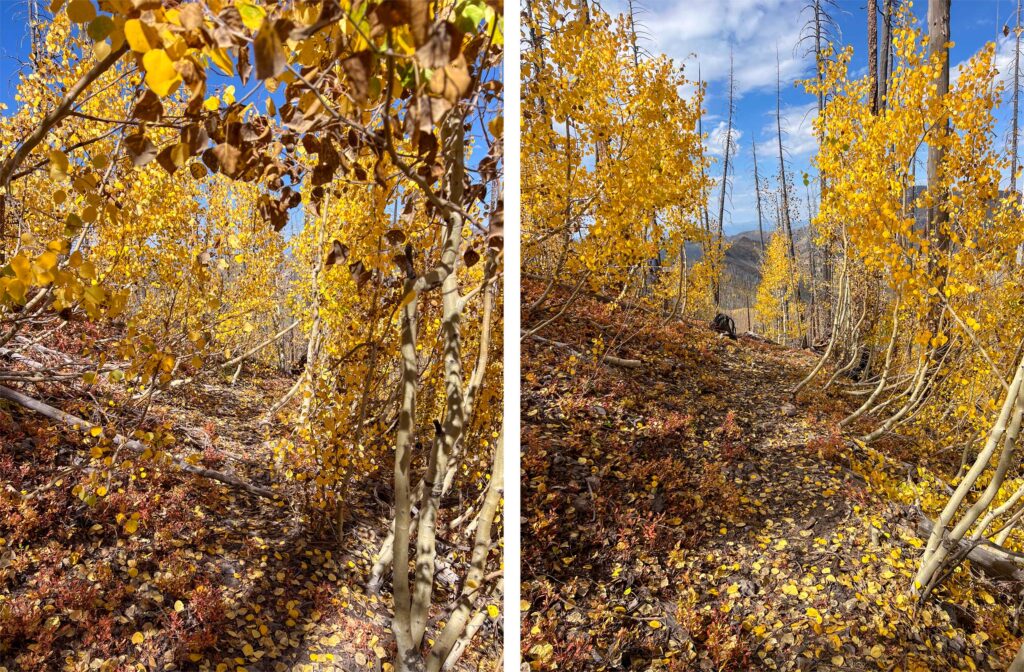
Upon arrival to our home for the next week, not only were we hesitant about the cabin, but we were somewhat hesitant about our water source as well, a spring just a thirty second walk from the Apache Fire Cabin. At first it seemed less than ideal due to its turbidity and silitiness, but given time and patience it proved to be a worthwhile source that was able to satisfy our watering needs for the extent of our hitch. We also had a contingency plan to draw from Black Mountain Spring, the only caveat being that it was over half a mile from the cabin down Holt-Apache Trail and mother nature had inconveniently laid an abundance of logs between us and the spring.

After setting ourselves up, we cruised deeper down the Holt–Apache Trail to begin our mission: see a log, cut a log, roll a log. Throughout the arduous work days we encouraged one another, helped each other out, and picked each other up. The next few days working on the trail some may describe as a cacophony, but to us it was a symphony. We were serenaded with the sounds of our singing saws, the percussion of pounding wedges into kerf echoing down the slopes, and the celebratory screams and sighs of shoving behemoths off of the trail. Some logs really put us in a bind and just normal sawing wasn’t going to cut it. Underbucking was undergone, relief cuts were implemented, axes were swung; all while the kibitzer in the back of our minds was continuously nagging at us like the peanut gallery. But we prevailed! The days were long, the work was in no way easy, but it was satisfying and by the end of each workday we were all heartily exhausted and ready for a restful evening to regain our strength so we could wake up and do it all again the next day. These restful evenings consisted of an early dinner as the sun was setting in the west while simultaneously a filling moon rose in the east. Dinner was followed up by a few of us battling our exhaustion to enjoy some card games before breaking off into our respected sleep receptacles.
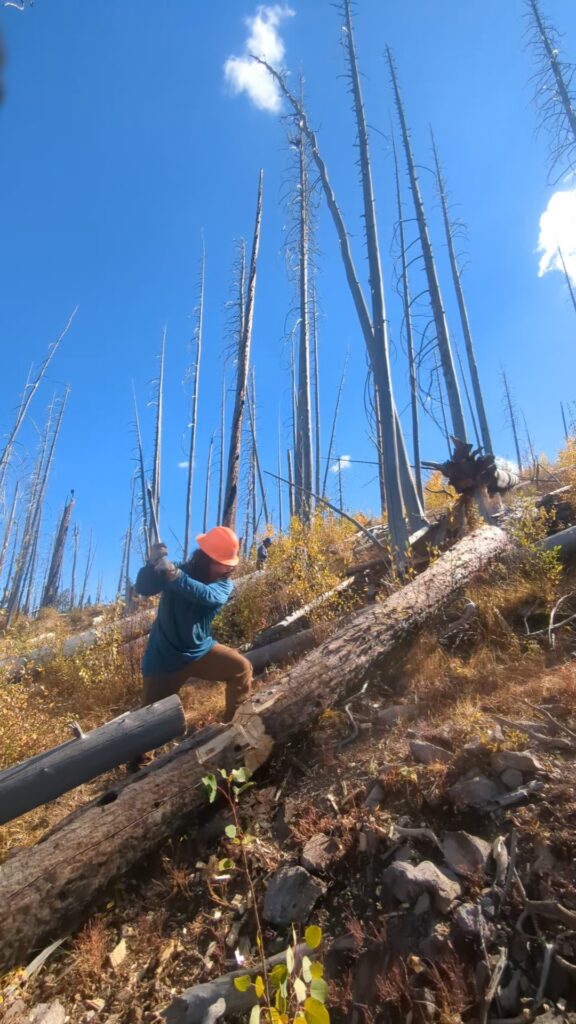
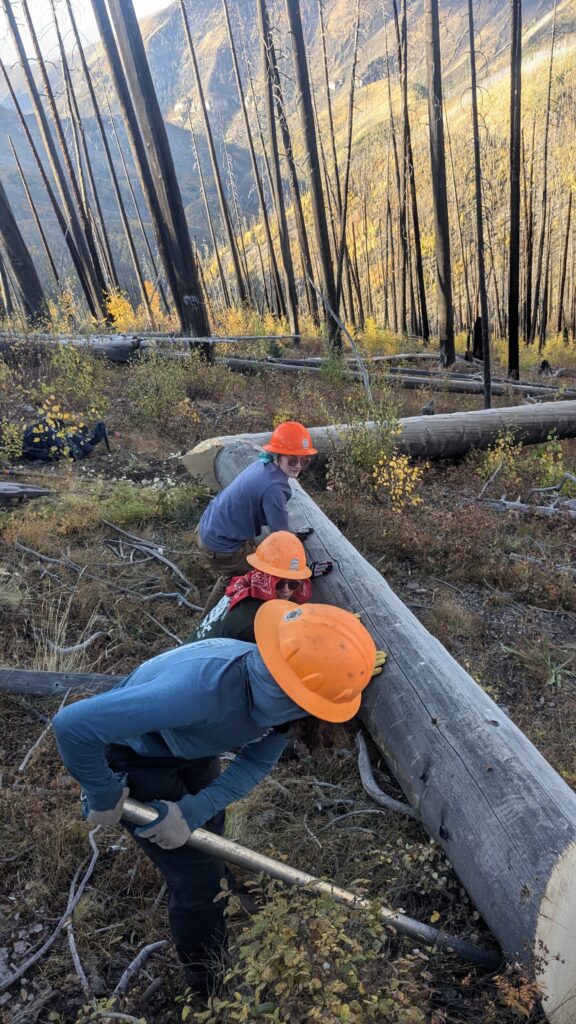
Before the end was upon us we successfully removed 244 logs, clearing roughly 0.6 miles of the Holt-Apache Trail from its junction near Apache Cabin out to Black Mountain Spring. On Tuesday, we spent part of the day finishing up some brushing and treading through the worst sections left from our previous hitch, then in the afternoon we broke down camp and trekked back to Hummingbird Saddle where we had been planning on spending the last night. However, everyone was still feeling pretty good at that point and we still didn’t have working water filters, so we as a crew came to the consensus to continue all the way out to the trailhead and camp in the frontcountry. We ended up hiking a measly nine and a half miles out that day!
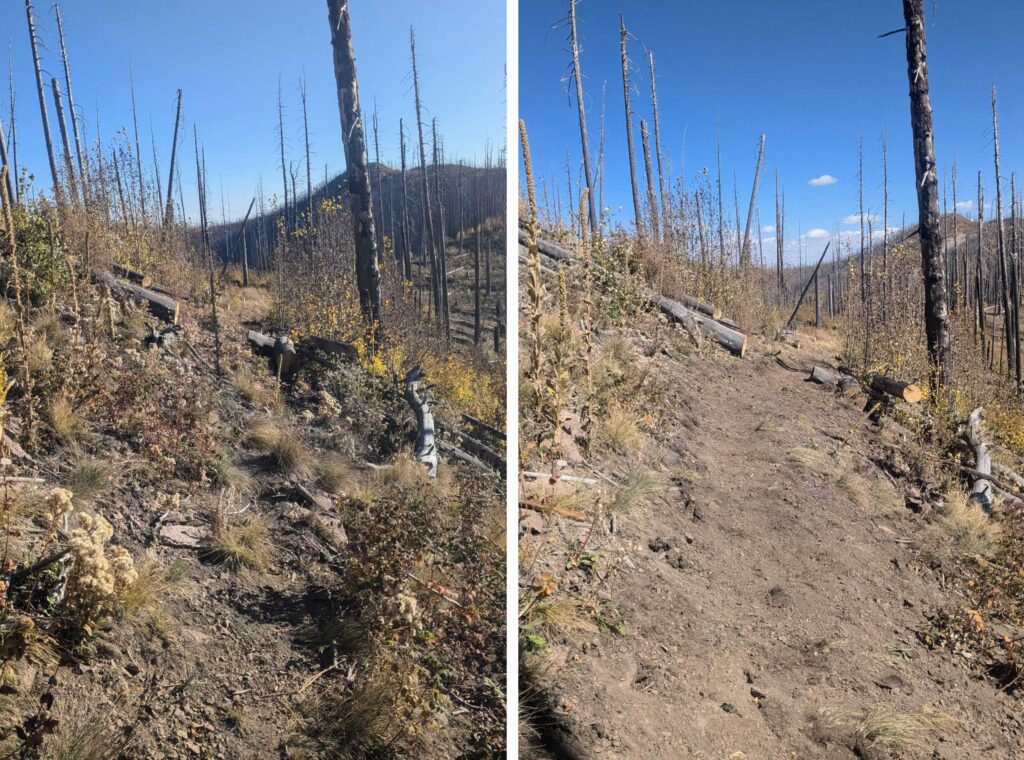
Come next hitch, a crew will be returning to this area to push the Holt–Apache Trail deeper into the Wilderness—as long as weather allows! The work that we have completed and that lies ahead is rough, but the views, the crews, and the satisfaction of a job well done make it all worth it in the end.
